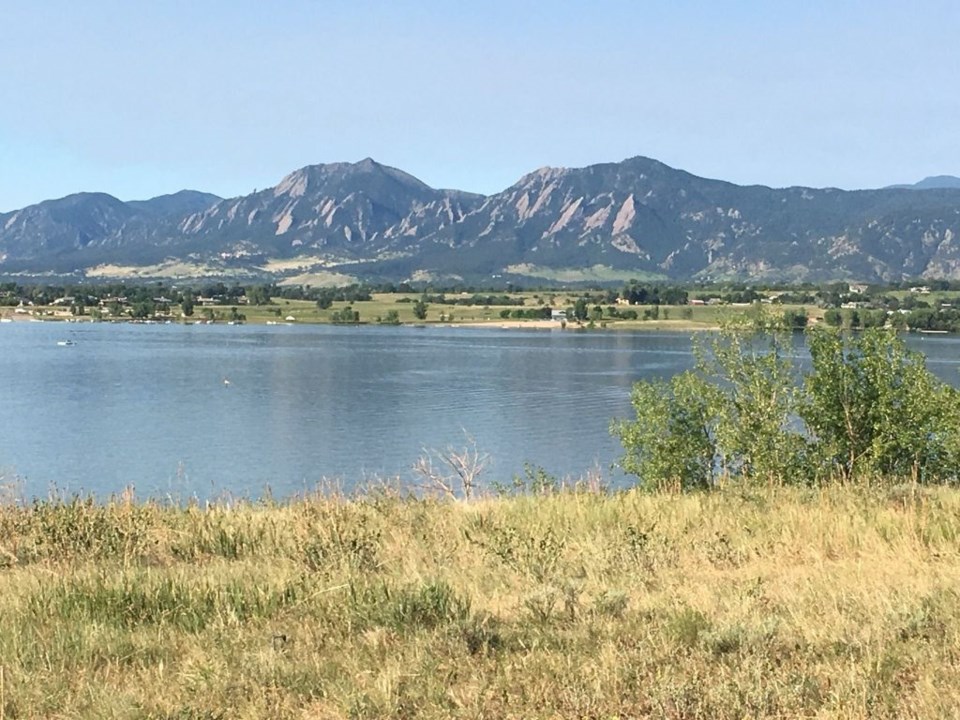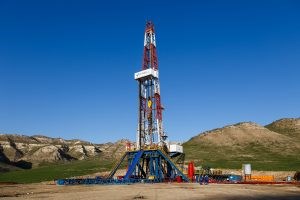This content was originally published by the Longmont Observer and is licensed under a Creative Commons license.
The air quality monitoring installation site at Union Reservoir is on track for completion. Real-time monitoring results, set to emerge in 2020, will give concerned citizens and officials data on air pollutants and their origins.
The Union Reservoir site will have testing equipment in place much like its sister site on the Boulder Reservoir. When the equipment is installed, the public will be able to monitor real-time results at the University of Colorado's website.

Air quality is a concern many people have. Longmont citizens rallied around the topic, as did state environmental advocates, leading the way for Proposition 112 in 2018.
Within the proposition, health concerns were cited - linking toxic emissions to cancer, respiratory problems, birth defects, and other health problems. It would have established buffer zones between fracking sites and occupied buildings such as schools and homes. The proposition was defeated on November 6, 2018, as voters said “no” to larger setbacks for oil and gas sites, with 56% of voters turning down the proposed regulations. Advocates for clean air are not forgetting how hard they fought.
"It was the people who knocked on doors. The people spread the word on Proposition 112. They brought it to light," says environmental advocate James Kenworthy. He is troubled by the high rates of asthma in Boulder County. "This is a health issue," he says. Grassroots efforts from groups like Longmont Leads with Love and Colorado Rising keep the topic in front of the public locally.
The surge of advocacy helped bolster SB19-181 which gives local entities more control over where oil and gas companies could drill. The bill does not impact current wells or new oil development. The legal wrangling keeps the topic in the forefront of the news. But it also keeps it in the minds of residents, especially the ones who’ve been actively participating in clean air support for many years. The result of the scrutiny and interest of concerned residents and advocates is an air quality monitoring site located at Union Reservoir.
Lynette McClain, a regular city council meeting attendee and citizen activist, got involved with the clean air issue upon meeting other concerned residents. She contacted Dr. Helmig, Fellow and Associate Research Professor at INSTAAR (Institute of Arctic and Alpine Research) at the University of Colorado.
Helmig studies, surface-atmosphere interactions; atmospheric chemistry and transport, atmospheric measurement techniques, polar atmospheric chemistry, and oceanic gas fluxes.
Helmig conducted a 15-month study to measure the influence of natural gas emissions at the Boulder Reservoir. The goal of the study was to measure the influence of natural gas emission at the Boulder Reservoir. During the study, 6,805 samples of Volatile Organic Compounds (VOCs), 49,000 measurements of methane, and 167,000 measurements of nitrogen oxides were analyzed.
"There are quite a few different pollutants that are of concern. Benzene and other aromatic hydrocarbons can impact citizens living in close proximity to oil and gas wells. On a larger regional scale, the health impacts arise mostly from secondary pollutants, with ozone and fine particulate matter being the most significant ones," Helmig says.
The ozone is a by-product of other chemicals that enter the atmosphere from both oil and gas drilling and other industrial activity including automobiles. Extraction, which is the process of procuring oil and methane, adds to the high ozone. Other population factors like automotive emissions also add to the ozone levels.
Which source is the major contributor in Boulder County is in dispute.

Information brought forth to Boulder County officials by Helmig showed particles found in the air came from mining processes rather than commuter traffic. Prevailing winds at the Boulder Reservoir revealed chemicals in the air came from Weld County. How much of the air pollution is caused by extraction and other sources is at the core of the new site's purpose.
By studying the results of air quality tests, experts will be able to determine the origins of the pollutants. The outcome will give local leaders and residents a blueprint for tackling air quality health problems. If the Union Reservoir equipment shows a correlating pattern of wind bourne pollutants coming from Weld County, the results will further bolster Detlev's hypothesis.
Councilmember Marcia Martin stated that "the Front Range as a whole is an ozone non-compliance area. Longmont is one of the worst locales. The city is installing, in conjunction with Dr. Detlev Helmig, monitoring facilities at Union Reservoir that match what has been done at Boulder Reservoir. We hope this helps us in persuading Colorado to regulate activity in Weld County more tightly if it proves Dr. Helmig's hypothesis about the origins of the pollution."
Martin refers to Helmig’s belief that the air particulates which are most harmful to people come from oil and gas sites, and not solely automotive congestion.
"We are free to proceed. In a few months, or maybe one year, we will begin to gather and process data," Martin says.
The air quality monitoring installation site at Union Reservoir is on track for completion. Real-time monitoring results, set to emerge in 2020, will give concerned citizens and officials data on air pollutants and their origins.
By studying the results of air quality tests, experts will determine the origins of the pollutants. The outcome will give local leaders and residents a blueprint for tackling air quality health problems.
"Our goal is to take action," McClain says of the first study's findings.
Longmont Councilmember, Joan Peck, recalls the work it takes to make local and state laws change to better address air quality legislation.
"What we couldn't do is stop them (the oil companies) from fracking, because the Supreme Court said no." Peck also states that the original efforts got rid of open wells in open space - a start but not the main goal, especially since the reservoir water will be Longmont's drinking water.

.jpg;w=120;h=80;mode=crop)
